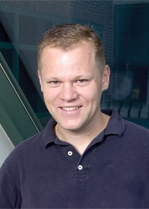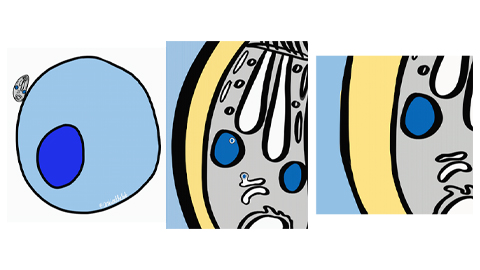Meet Wolfgang Peti
Wolfgang Peti, a professor of chemistry and biochemistry at the University of Arizona’s College of Medicine, Tucson, joined the ranks of associate editors at the Journal of Biological Chemistry this spring. Peti, who recently moved to Tucson after 13 years at Brown University, spoke with John Arnst, ASBMB Today’s science writer, about his lab’s work and interest in NMR spectroscopy. The interview has been edited for clarity and length.
 Wolfgang Peti of the University of Arizona College of Medicine studies post-translational modifications
Wolfgang Peti of the University of Arizona College of Medicine studies post-translational modifications
What is your group focused on?
We are studying post-translational modification enzymes, especially phosphatases and kinases, to see how they become specific enzymes, how protein-protein interactions turn serine/threonine protein phosphatases into specific enzymes and how kinases are regulated to become specific enzymes. And why we are interested in doing that is to understand how we can find novel ways to regulate them for medical reasons.
NMR is kind of a unique thing, because you can look at a protein at atomic resolution basically in real time. I don’t know of any other technique that allows you to do that. Crystallography is great, and cryo-EM is great to look at atomic resolution, but you have to get a crystal and you have to solve the structure.
Here, we work in solution. We put it in a magnet, and we can record, very quickly, spectra that tell us immediately what is changing. We can, in real time, see how proteins are moving and changing, and for me that was always an exciting thing, because I thought it’s as close as possible to seeing proteins as they behave in a cell.
What is your background and research training?
I studied chemistry and a lot of physics at the University of Vienna in Austria, where I was born, and also got a master’s degree in inorganic chemistry synthesis but always was intrigued by doing a lot of spectroscopy. I knew I wanted to know more about NMR spectroscopy, so I did my Ph.D. with Christian Griesinger, who was at that time at the University of Frankfurt. I tried to develop new ways to look at the flexibility of proteins and protein dynamics using what was a new parameter at this point, residual dipolar couplings.
After that I moved to The Scripps Research Institute in San Diego and was the first postdoc with Kurt Wüthrich, who had just joined Scripps at that time. I was there for about two and a half years and in 2004 began my first faculty position at Brown University.
There wasn’t much structural biology infrastructure at Brown before, and we built up a really nice facility. nce the facility was built up and working really well, I had the opportunity to leave for the University of Arizona, and since my wife is from Arizona, we decided that would be a great thing to do.
Did anything occur in a milestone sort of way that made you choose science as a career?
I was drawn to science, and I wanted to do more. I realized that chemistry bridges so many things so nicely, and I decided that chemistry’s really the most exciting thing I wanted to study. Anything else was never an option for me. I jumped into chemistry, and I never looked back.
What was your involvement with JBC prior to becoming an associate editor?
I published many papers with JBC. I had papers as a graduate student, as a postdoc and then as a faculty member. I always enjoyed publishing there, and at one point about four years ago I was asked to become an editorial board member. I was quite excited. It was a lot of fun, because you get papers that are close to your research, but you learn so many new things by looking at what other people are doing and really become a better scientist, I think.
What was your reaction when you were asked to become an associate editor?
That was very exciting. I’ve known Lila Gierasch, the JBC editor-in-chief, for some years — we were sort of neighbors when I was at Brown, which is not far away from University of Massachusetts Amherst, so I met her very early on in my career. Last year, we were at the meeting together in Switzerland, and we talked about JBC and what she wants to do, and she said she would need more people to help in JBC. I said I probably would be happy to do that, and it happened much quicker than I thought. I think it’s good for us to have society-based journals, and I always thought that JBC was a really good source for me to publish. I always had very fond memories of my papers with JBC.
What do you do outside of the lab? Do you have any hobbies?
I love to ride my bicycle. I like to be outdoors to run and hike, and Tucson is a perfect place for that. It has become much easier than being at Brown, because I don’t have to watch out for if it might rain on the weekend or if it’ll be cold on the weekend, so I really enjoy that much more. The only problem will probably be in the summer, with the heat, but I will look out for how to avoid that.
Do you have any advice for balancing life within the lab with life outside it for scientists in training?
I would say don’t worry too much. You find your own balance. Maybe you go biking in the morning and then work for the whole day and in the evening, or taking time off. You just have to realize that the better you plan your day, the more time you will have for doing something outside.
Enjoy reading ASBMB Today?
Become a member to receive the print edition four times a year and the digital edition monthly.
Learn moreGet the latest from ASBMB Today
Enter your email address, and we’ll send you a weekly email with recent articles, interviews and more.
Latest in People
People highlights or most popular articles

Sketching, scribbling and scicomm
Graduate student Ari Paiz describes how her love of science and art blend to make her an effective science communicator.

Embrace your neurodivergence and flourish in college
This guide offers practical advice on setting yourself up for success — learn how to leverage campus resources, work with professors and embrace your strengths.

Survival tools for a neurodivergent brain in academia
Working in academia is hard, and being neurodivergent makes it harder. Here are a few tools that may help, from a Ph.D. student with ADHD.

Quieting the static: Building inclusive STEM classrooms
Christin Monroe, an assistant professor of chemistry at Landmark College, offers practical tips to help educators make their classrooms more accessible to neurodivergent scientists.

Hidden strengths of an autistic scientist
Navigating the world of scientific research as an autistic scientist comes with unique challenges —microaggressions, communication hurdles and the constant pressure to conform to social norms, postbaccalaureate student Taylor Stolberg writes.

Richard Silverman to speak at ASBMB 2025
Richard Silverman and Melissa Moore are the featured speakers at the ASBMB annual meeting to be held April 12-15 in Chicago.

